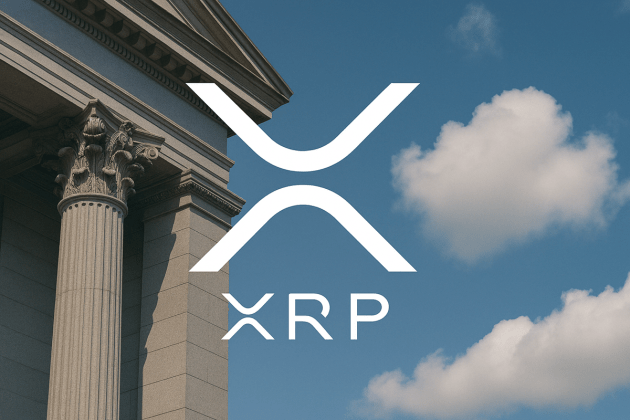Blockchain technology is close to unlocking a $400 billion revenue opportunity for asset managers by enabling the tokenization and fractionalization of private assets, according to Polygon’s head of institutional capital, Colin Butler.
Speaking exclusively to Cointelegraph, Butler unpacks how the broader financial sector is on the cusp of launching products and services built on blockchain protocols that could fundamentally disrupt the landscape of global finance.
Butler, who joined Polygon after a two decade long career on Wall Street, highlights a changing narrative toward institutional adoption as major investment firms like KKR began tokenizing significant funds using nascent blockchain platforms.
“KKR tokenized their healthcare fund via Securitize on Avalanche and that really opened up the floodgates for tokenization and institutional adoption, using blockchain as a utility, as a software platform,” Butler explains.
“It has nothing to do with crypto and speculation. That was really the start, in my mind, of rewiring the global financial system on blockchain rails."
Butler adds that the technology itself is driving the change as it offers solutions that are “orders of magnitude better” and, in some cases, offers a service or utility that did not exist, which is driving mass adoption from institutions into 2024.
Blockchain's real impact on finance
Butler highlights three prime examples of mainstream institutions making use of blockchain technology in ways that have either drastically improved business operations or stand to greatly impact specific sectors.
Butler points to German technology giant Siemens’ tokenized bond issuance on Polygon in Feb. 2023, which has reduced settlement times from seven days to one day. The result reduces costs by percentage points that equate to trillions of dollars annually.
“That doesn’t sound super exciting to many people, but from their perspective, it de-risks their entire issuance process. It changes the dynamics of whole industries because they no longer have to tie up capital for a certain timeframe,” Butler explains.
Related: Polygon develops open-source prover, allowing Ethereum chains to become ZK layer 2s
Another example is global asset manager Franklin Templeton, which tokenized its money market fund on Polygon in April 2023. The firm touted increased security, faster transaction processing and reduced costs when it announced the fund’s transition to Ethereum’s layer-2 scaling protocol.
Butler says the move allows investors to continually transact within the blockchain system instead of having to constantly convert between cryptocurrency and fiat by settling with a money market fund based settlement token.
“What that allows you to do, in my view, when you’re interacting in the blockchain ecosystem, is avoid off-ramping. You’re getting current rates of 5%. You can use that settlement token to do additional transactions just on blockchain. I think that’s pretty important for the industry,” Butler adds.
$400 billion revenue opportunity in private assets
Polygon’s head of institutional capital is most intrigued by what he describes as a $400 billion revenue opportunity for asset managers and banks in the private asset sector. Butler references investment manager Hamilton Lane, which has begun tokenizing funds targeting individuals with net worths between $1 million to $30 million to widen the distribution of private assets.
The promise of tokenizing private equity and hedge funds is aimed at addressing the relative exclusivity of these products for individuals with net worths lower than the abovementioned threshold.
Investors face several hurdles, including having to lock up capital for years, million-dollar investment requirements, capital calls and manual administration processes. Butler estimates that $150 trillion of funds are not exposed to this asset class.
“By tokenizing and fractionalizing, you can lower the minimum investment from $5 million to $20,000 or $10,000. If you’re a private equity manager, you can widen your distribution.”
Citing Baine & Co’s 2023 private equity report, a $400 billion revenue opportunity represents a “giant addressable market” that is primed to be targeted by all players in the financial system.
“All of a sudden, you have a traditional financial system that’s heavily incentivized to create a parallel version of that with private assets on blockchain and incorporate it into the traditional system. So for the first time in history, you have a gigantic financial incentive for the largest players in the world to move on to blockchain,” Butler said.
Polygon’s aggregation layer aims to centralize liquidity
Cointelegraph has continually reported on Polygon’s development through 2023, which saw several significant protocol upgrades and releases.
Related: Polygon 2.0: 2024 to see unified ZK-powered L2 chains
For end users, Polygon Labs claims the user experience will be “like the internet,” and users won’t have to undertake “cumbersome and frequent bridging” to use other chains.
Polygon also released an open-source type 1 prover in Feb. 2024, allowing ZK-proof generation for any Ethereum Virtual Machine (EVM) chain. The solution will enable protocols and services like optimistic rollups to unlock ZK-proofs layer-2 functionality.
Magazine: Slumdog billionaire: Incredible rags-to-riches tale of Polygon’s Sandeep Nailwal











